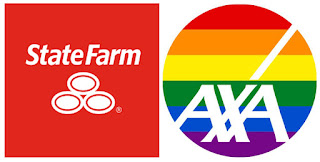It had not really occurred to me how much I depend on “Pop Culture” in my everyday way of communicating, until I was trying to describe a man that I had seen in the grocery store to my husband, Mark. I was telling Mark that this man looked like a throw back from a 70’s band. He seemed unimpressed, Mark had a very sheltered teen life and did not understand what could possibly be funny about a clean-cut man in a collared shirt, he was thinking Pat Boone. (That was his point of reference from the 70s.)
This man did not look like that, he had
exceptionally long, unusually thick, and curly hair that he wore down his back.
He had on a collarless, long sleeved, V-necked sweater, and very tight pants.
It was not until I described this stranger as a man that belonged in a “Hair
Band” like Hurricane, that my husband understood the reason I thought he looked
out of place and comical.
This conversation, along with the
reading for this week’s assignment, spurred a real curiosity about how much I
reference a rhetorical artifact in conversation in a single day. I was shocked!
On Monday, January 11, I referenced either a band, song lyrics, movie, or tv show
79 times, and that is just what I caught. I counted another 62 times by someone
who was either talking to me or had sent an email reference the same list of artifacts.
(Those were just the references I understood.)
So, the question I am asking myself
now is; when I make an ad for someone that wants to brand their product or
service, is it better to tie in a significant popular culture artifact, or is
it better to try to create an original sign?
Example:
Like a Good
Neighbor, State Farm is there.
This ad is creating an ideology that neighbors are good, and your insurance
should be like that.
Security is a priority, not an option, Smart Choice. This insurance
ad is simple rhetoric just to make you think about your insurance as a
responsibility.
So, from
my point of view, there are many Pop Culture artifacts that can fit any one
situation. Choosing the correct one all depends on how you are feeling that
day.
What is your feeling about creating an original ad for a new branding, use an artifact that can be easily identified and pull it into the advertising and branding of the product, or create a new and original idea and hope it takes off?



Tammy, you present a great question! I believe that a brand can win using either strategy. They could create their own original messaging that might grow to become a well-known contribution to pop culture or they could meet their goals by leveraging existing pop culture to capture attention and capitalize on people's nostalgia.
ReplyDeleteA successful examples of the first strategy that went on to join the exhibit of pop culture is Wendy’s “where’s the beef,” slogan. I’ve heard that over and over again from my parents, and have never personally seen the commercial. However, I know that Wendy’s will offer me beef.
An unforgettable example (for me anyways) of the second strategy is Volkswagon’s Star Wars super bowl ad. My family and I are Star Wars fans to the core, so we completely gave our attention to the little kid running around in a Darth Vader costume “using the force” on household objects that would power on at the precise moment the little guy thrust out his hand. We all let out laughter when the child jumped with surprise when “the force” brought the family Volkswagen to life and the camera cut to his father pressing the engine start button behind the child’s back.
I believe the deciding guidance in choosing between these two directions is what best fits the target market and the brand we are representing.
Nice blog! Honestly I think it can be hard to create something that fits in and becomes pop culture. There are brands that have become part of pop culture and what they had to offer marketing wise worked and is main stream just like the examples you shared. What I feel like a lot of people do isn copy of something that is popular rather than creating their own original item in fear of it not being popular or as known if they are just to imitate others work. The problem with that route though is that you are always changing your marketing and it's never the same which can hurt a brand whereas originality sticks if you hit the nail on the head. In my opinion if you are wanting your brand to be considered pop culture you just have to create something and hope it hits and if it doesn't maybe make some adjustments to help it hit.
ReplyDelete